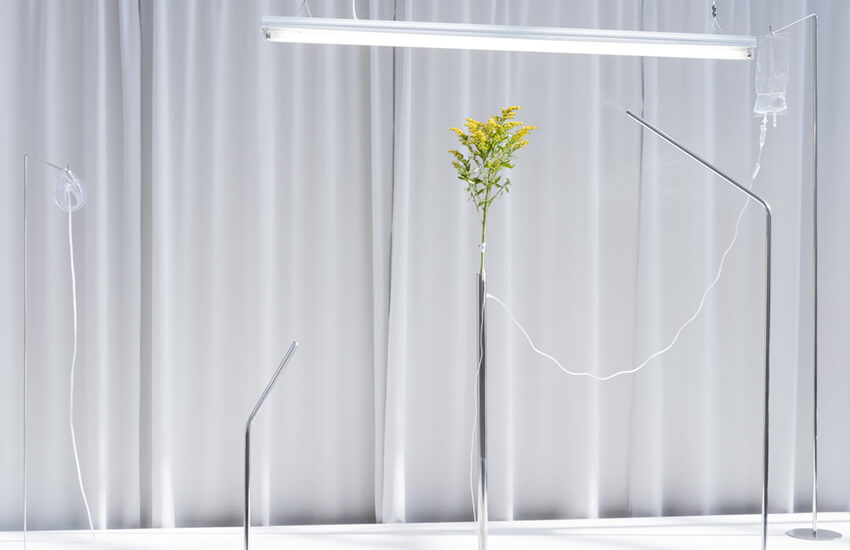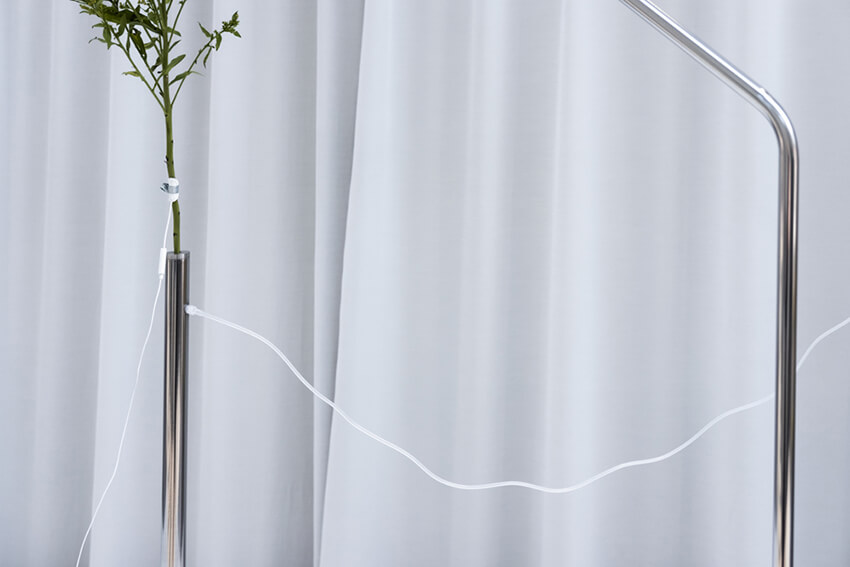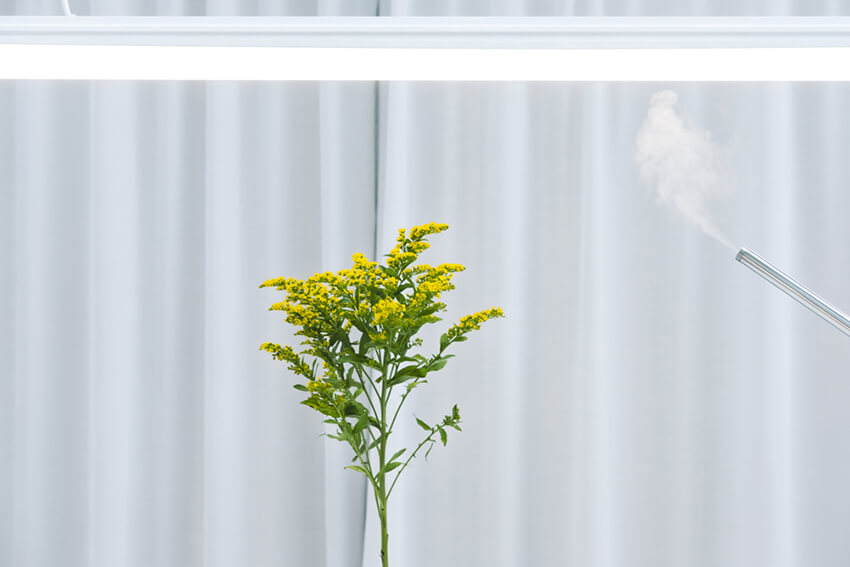Interview by Sim Goodwin

Now our transition into the Anthropocene is seen as complete, what becomes of nature? Is it still existent, or has it become a construct? A theory no longer seen in practice? Perhaps it is best viewed as a paradox, somehow true and yet false. The world around us, and even the space beyond us, is shaped by our own human existence and all that comes with it. Our industry and economy, our intelligence and morality, our cultures and our societies. How should we relate to this altered nature? These questions and more buzz around in the head of the Swedish designer Johan Krantz.
Uncertain of the existence of any life on this planet, we care first and foremost for our own survival. Nature holds a power that artificiality does not. Living organisms evolve with their surroundings in order to survive. We adjust and continue to push the limits of our own species to survive, with artificial enhancement strategies to activate when our natural system fails.
A young designer from Skåne, in the south of Sweden, Krantz graduated from Stockholm’s Konstfack – University College of Arts, Crafts and Design with a Master’s degree in Design in 2018. Once a flower is cut, it begins to die. In Johan’s work Solidago Life Support, a single flower, the Solidago canadensis, is hospitalised.
To exist beyond its natural system, it is connected to a life support machine. Soil nutrients in a drip bag, humidity, airflow and artificial natural light imitate the climate. An oxygen mask supplies carbon dioxide, and tissue cultures genetically clone in vitro the flower in a continuum within the system. An acoustic contact microphone can detect drought stress in the flower, which creates a soundscape.
The hypocrisy of humanity’s attitude to life can be seen. Why do we choose ever to lengthen our existence and perceive it as immoral to allow a premature or natural death and yet fail to provide the same service to ‘nature.’ The gentle noises of the machines, the surgical curtain as a backdrop.
Krantz’s life support machine doesn’t only question the existence of the supposed dichotomy between nature and artifice but also the influence and power of the digital over life itself and its servitude to humanity.


Solidago Life Support explores the concepts of artificiality and nature how and when did this interest come about?
During my master’s studies, my overall exploration was the nature-culture divide. Our disconnection from nature comes from our creation of the artificial. The loss of an untouched natural world has forced us to manage our surroundings as an artificial environment, a new nature. Trees, plants, animals, atoms and the climate are increasingly controlled and governed by humans.
The technological environment becomes so complex and uncontrollable that we start to relate to it as a nature of its own. I would argue that the divide is not binary. Nature is a cultural construct which involves the coexistence of the artificial. Nature is a subset of culture.
Perhaps it is natural for humans to create the artificial?
A bird building a nest is natural, but humans building a house we call artificial. Artificiality is central to humans. Living in the weird and wonderful times of nanotechnology, synthetic biology and neuroscience, it is no longer about designing the things in the environment around us but designing life itself.
Our technologies have become progressively more sophisticated, cultivating and caring, first and foremost, for our own life. That affects survival strategies for other humans and non-humans in this entangled universe.
Solidago is seen as an “Invasive species.” Can you talk a little about its significance of it and why you chose to gift it immortality in this project?
I chose the Solidago candensis since its actions resemble human ways of exploring the earth. Originally it is native to northeastern and north-central parts of North America. As a commercially cultivated cut flower, it is sold worldwide. It has become an adventive species through the irrational human desire of having it as an ornamental flower in gardens. Having escaped from gardens, it is an invasive plant, remarkably adaptable, putting native species at risk wherever they grow.
We have been shaping nature since humans entered the realm, not only to suit our needs but our most irrational desires. Flowers thrive on these desires, giving them an evolutionary advantage. Flowers have a strategy for survival. Evolving to be more attractive to the animals and insects to spread their seeds, as well as always competing; for space, nutrients, sunshine, and water.
A single flower, in its mortality, fragility and complexity, shows the closeness we share with other life forms. Very similar to the enhancement system humans rely on when our natural system fails, the flower lives on through a life support machine. The technology is not on its own and isn’t that uncanny, but the flower being hospitalised is.
You are a young designer. Where do you see this work taking you?
This work seeks to instil a sense of wonder about this most amazing of phenomena we call “life” and our existential quest for immortality. As we are already treating society as a living laboratory, I want to continue to work artistically with my sceptical fascination with technology.
The different hopes, fears, promises, delusions and the movement of scientific discoveries into life. To move the understanding from practical applications to the more poetic and philosophical.
And if you could live forever, supported by machines, would you?
There’s nothing that frightens me more than cryogenics. One lifespan is enough.
What is your chief enemy of creativity?
Overall it is about not being passionate or having time and space to do what I want.
You couldn’t live without…
A sense of belonging.






